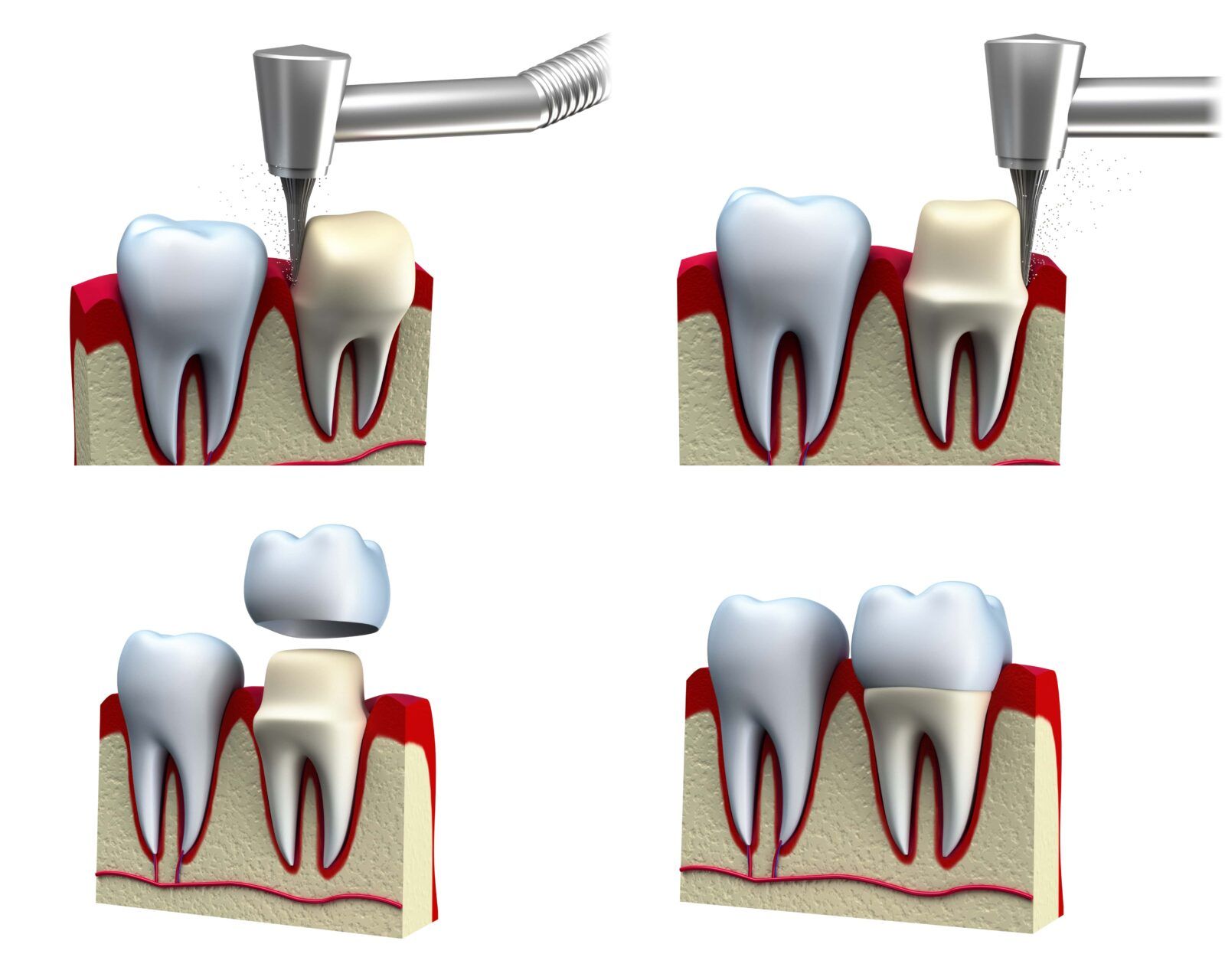Dental crowns are a cornerstone of restorative dentistry, offering both functional and aesthetic solutions for damaged teeth. In this blog, we’ll explore what dental crowns are, why they’re necessary, and the step-by-step process of having one placed.
What Are Dental Crowns?
A dental crown is a custom-fitted cap that covers the entire visible portion of a tooth above the gum line, restoring its shape, size, strength, and appearance. Crowns can be made from various materials, including porcelain, ceramic, metal alloys, or a combination of these. The choice of material depends on the tooth’s location, the patient’s aesthetic preferences, and the functional needs.
Dental crowns serve several important purposes:
- Restoring Damaged Teeth: Teeth that are cracked, broken, or extensively decayed may be too weak to survive with fillings alone. Crowns provide the necessary support to strengthen and save these teeth.
- Protecting Weak Teeth: For teeth that are at risk of breaking, such as those with large fillings or significant wear, crowns offer protective coverage and prevent further damage.
- Cosmetic Enhancement: Crowns can cover discolored or poorly shaped teeth, enhancing the overall appearance of your smile.
- Dental Restoration: Crowns are essential components in other dental procedures, like bridges, where they serve as anchors, or over implants to replace missing teeth.
The Process of Getting a Dental Crown
Initial Consultation and Evaluation: Your dentist will examine your teeth, possibly take X-rays, and discuss whether a crown is the best solution for your dental needs.
Tooth Preparation:
The tooth receiving the crown is reshaped to ensure the crown will fit properly. This involves removing a portion of the tooth’s exterior. If the tooth is severely damaged, it may need to be built up with filling material to support the crown.
Impression Taking:
Once the tooth is prepared, an impression of your tooth is taken using dental putty or digital scanning. This impression is used to custom-design your crown so that it fits perfectly in your mouth.
Temporary Crown Placement:
A temporary crown is often placed to protect the prepared tooth while your permanent crown is being made. This temporary crown is usually made of a less durable material and is meant to be in place for only a short time.
Permanent Crown Fabrication:
The impression of your tooth is sent to a dental laboratory where your permanent crown is crafted. This process can take a few weeks, during which the lab technicians work to create a crown that matches the size, shape, and color of your natural teeth.
Final Placement:
When your permanent crown is ready, you’ll return to the dentist’s office. The temporary crown is removed, and the new crown is adjusted as needed to ensure a proper fit and bite. Once everything looks good, the crown is cemented onto your tooth.
Aftercare and Follow-up:
Your dentist will provide instructions on how to care for your new crown, including maintaining good oral hygiene practices and scheduling regular dental check-ups to monitor the health of the crowned tooth and surrounding gums.
Conclusion
Dental crowns are a versatile and reliable solution for restoring and enhancing the functionality and appearance of your teeth. With modern advancements in dental technology, the process of getting a crown is more efficient and comfortable than ever. If you suspect you might need a crown or are curious about improving your dental health, consult with your dentist to explore your options.

